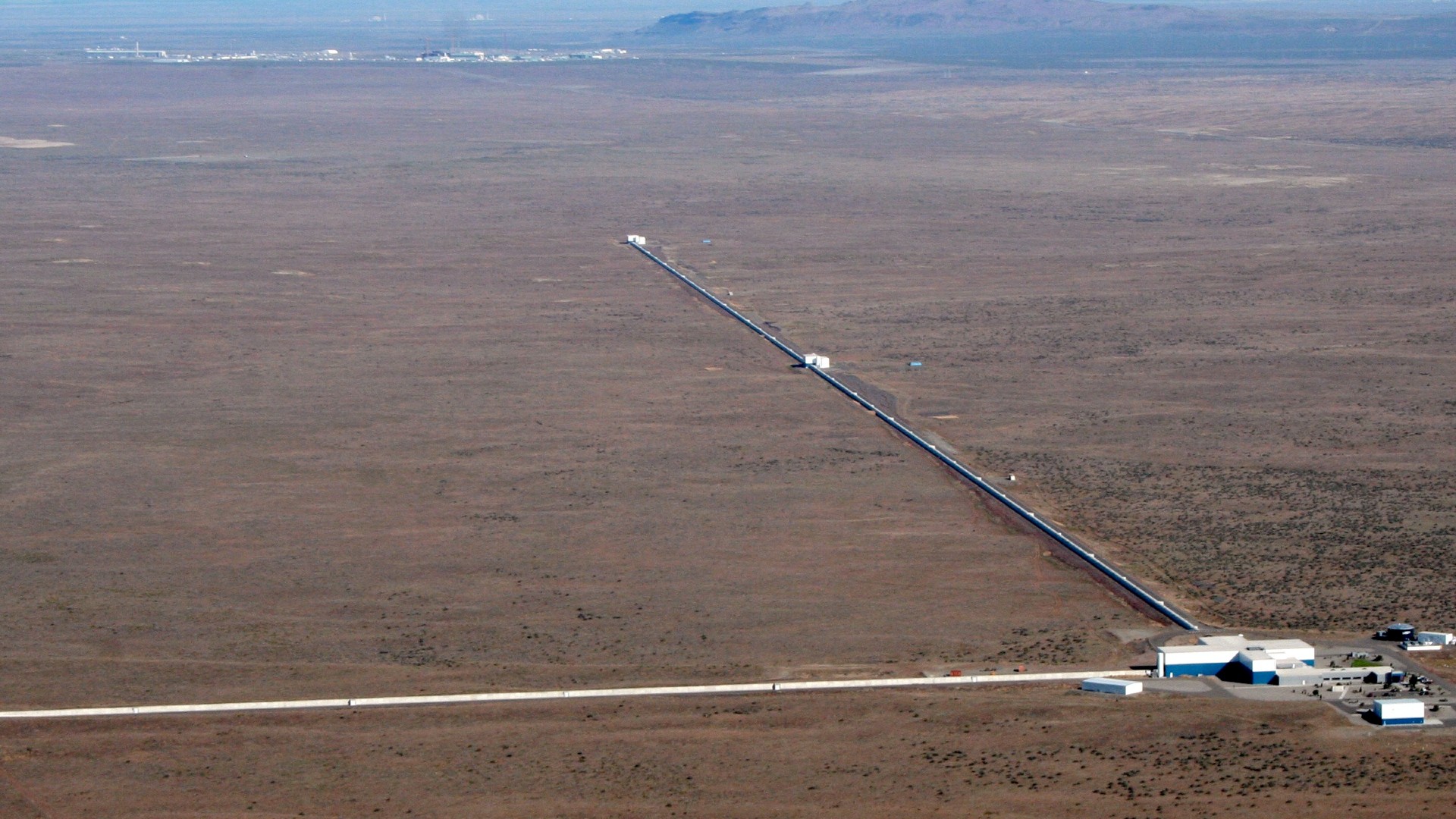One of the world's largest lasers could be used to detect alien warp drives
The detector would search for ripples in the fabric of space-time left in the spacecraft's wake.

Scientists have proposed another use for the world's largest gravitational wave observatory: scanning for the ripples in space-time left in the wake of gargantuan alien spaceships.
Gravitational waves ripple out when objects with mass move through space. Bigger objects — such as planets, neutron stars or black holes — produce more prominent gravitational waves. These space-time ripples were first directly detected in 2015, but since then, scientists have been getting better at spotting the waves as they lap at our cosmic shores.
Now, new calculations published Dec. 5 to the preprint database arXiv suggest that the U.S.-based Laser Interferometer Gravitational-Wave Observatory (LIGO) can look beyond conventional sources for these space-time ripples. Colossal alien spacecraft traveling at high speeds, or pushed along by warp drives, would also produce the telltale vibrations, the authors said.
Related: James Webb Space Telescope could help hunt for habitable alien worlds
The LIGO detector spots gravitational waves from the tiny distortions they make in space-time as they pass through it. Made up of two intersecting L-shaped detectors — each with two 2.48-mile-long (4 kilometers) arms and two identical laser beams inside — the experiment is designed such that if a gravitational wave passes through Earth, the laser light in one arm of the detector will get compressed while the other expands, creating a tiny change in relative path lengths of the beams arriving at the detector. The warpings of space-time that even the largest gravitational waves make, however, are minuscule — often the size of a few thousandths of a proton or neutron — meaning that LIGO is incredibly sensitive and requires strict maintenance and calibration.
To see how far this sensitivity could be stretched, scientists made calculations of the smallest object that would generate clearly detectable gravitational waves on Earth. It turns out, it would still be pretty big: To be detectable by LIGO, an alien mothership would need to weigh roughly the same as Jupiter, travel at one-tenth the speed of light, and be within 326,000 light-years of Earth.
Are spaceships of this scale and speed even possible? The researchers don't know, but they hope to squeeze down the ship size to more reasonable proportions as increasingly sensitive gravitational wave (GW) detectors, such as the European Space Agency's 2037 Laser Interferometer Space Antenna, are deployed. The physicists also noted that advanced alien warp drives would create gravitational wave patterns that would be distinguishable from natural sources and that, if detected, these alien waves could even provide humans with clues about how to reverse engineer the technology.
Get the Space.com Newsletter
Breaking space news, the latest updates on rocket launches, skywatching events and more!
"This is because the shape of the GW signal is entirely dependent on the trajectory of the object," they wrote in the paper. "Thus, as a burst signal is detected, one can attempt to reason the qualities of the transportation mechanism present based on the shape of the GW signal."
Originally published on LiveScience.
Join our Space Forums to keep talking space on the latest missions, night sky and more! And if you have a news tip, correction or comment, let us know at: community@space.com.

Ben Turner is a U.K. based staff writer at Live Science. He covers physics and astronomy, among other topics like weird animals and climate change. He graduated from University College London with a degree in particle physics before training as a journalist. When he's not writing, Ben enjoys reading literature, playing the guitar and embarrassing himself with chess.
-
PlushTigga Far out Ben. Are your articles written for 8-10 year olds? Left in the wake of gargantuan alien spaceships? Trash, mate. Absolute typical main stream media trash. Keep up the good work. I'm sure someone out there believes you.Reply










